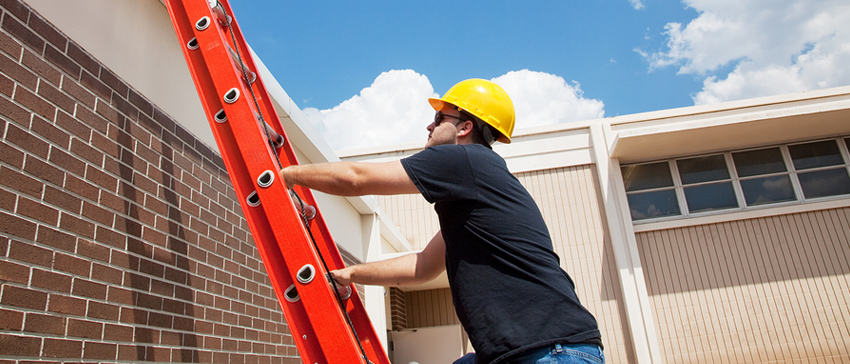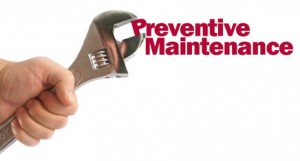Commercial Roof Maintenance Tips to Extend the Life of Your Roof
A roof is the most critical part of any structure, and keeping you roof in good repair should be a top priority in order to extend its life or prolong the need for full replacement. As with any building (commercial or residential), it’s important to keep all drains clear of debris and, of course, to have a reliable, professional roof repair company on hand. If problems arise, you need to be prepared to take action. So, what else should you consider when it comes to roof maintenance? Keep reading! We’ve compiled the industry’s top preventative maintenance tips for you to keep in your back pocket.
Don’t Avoid Leaks
A seeping roof is extremely dangerous. Don’t allow your business to suffer from blocked drains or standing roof water that can leak into your business’ attic or air duct systems. Repair costs can be significant. The moment you notice a leak, get a repair crew out immediately. If neglected, the damage could lead to electrical damage, equipment/product damage or worse—roof collapse. Do yourself a favor. If you notice water, bite the bullet and get a repair done while the leak is small.
Get Your Roof Inspected Regularly
Have a trusted professional come out and take a look at your roof every year. Yes. Every year. Regular preventative maintenance allows inspection crews to keep an eye out for leaks and sagging. Weak spots in roofs eventually lead to some sort of failure. And preventative maintenance plans help to do just as the name suggests: PREVENT costly damage and replacement. Look for a local commercial roofing company who gives restoration estimates in their maintenance reports so that you’re financially prepared if the worst case scenario occurs.
Don’t Walk on the Roof
Unless you’re a professional, do not walk on your business’ roof. It can cause lasting damage and impact its life expectancy. Oftentimes, the installation of walk pads can be a wise investment. These walkways are stabilized independently of the main roof’s construction, and allow inspectors to walk freely on the roof without fear of damaging it. Walk pads give ease of access to the professionals you hire and can be easily removed, if necessary.

What is Preventive Maintenance?
Preventive maintenance is the easiest way to increase the life expectancy of your roof, and defer the costs of replacement. Preventive maintenance is also a way to keep your commercial roofing guarantee in tact. Most warranties clearly stipulate that the roof must be maintained in order for repairs to be covered.
Everyday exposure to the elements can take a toll on your roof. Every additional year you can go without replacing it means more money to take care of your business’ needs.
If problems like leaks are not immediately addressed, they can compound and cause damage to the structure of your roof, ceiling and interior of your establishment. If you skip having your roof routinely maintained, it can end up costing you more in the long term.
During preventive maintenance, a roofer comes to your place of business and checks for roof damage. If minor damage is detected, the roofer makes the needed repairs.

Commercial Roofing Preventative Maintenance: What Is Involved?
The National Roofing Contractors Association (NRCA) recommends that building owners conduct commercial roof system maintenance twice a year. Commercial roofing contractors tout the importance of preventative maintenance services, especially for spring and fall. But what exactly are those commercial roofers doing on your roof?
To put it simply, they’re giving it a thorough checkup.
When high-quality professional roofers conduct preventative maintenance, they will:
- Access your roof and conduct a visual inspection.
They will check all areas of the roofing system for irregularities and note any they might find. Are the flashings tight? Is there any damage to the roof surface? Is there evidence of standing water or leaking? A good inspector will know what to look for and where to look for it, and a thorough inspection will leave no stone unturned.
- Remove debris.
Debris can block drains and downspouts and prevent water from leaving the roof appropriately. This can lead to significant roof damage and leaks inside the building. A good preventative maintenance service will include checking roof drains and downspouts to ensure that they are clear of leaves, twigs, trash, and any other type of debris.
- Perform maintenance as needed.
If the roofers identify issues that require immediate maintenance, they will address them as they’re able. For problems of a larger scale, they’ll develop a plan and keep you informed of your options moving forward. If they identify issues that are likely to arise down the road, they’ll present options for those as well. Early detection makes all the difference, and a quality contractor will help you decide the best actions to take to prolong the performance and life of your roof.
- Document everything.
The contractor should present all details in writing and take photos as well. This will help them track changes from inspection to inspection, effectively monitoring the health of your roof.

The Importance of Preventive Maintenance for Commercial Roofs
Regardless of the type, every building owner wants to get the most out of their commercial roof system. The most cost-effective way to maximize roof performance and increase its life cycle is a proactive approach to preventive maintenance. The key word here is preventive. If an owner has tarps covering their computers, then at that point they have waited too long.
Building owners should consider that spending a little bit today can save a tremendous amount of time and money tomorrow. A preventive maintenance plan is an investment for the future. After all, you wouldn’t go years without changing your car’s oil or rotating its tires and not expect your vehicle’s performance to suffer, so why would your roof be any different?
Preventive maintenance includes regularly scheduled inspections, periodic repairs of common roofing components (flashings, drains, curbs, etc.) and the addition of reflective coatings.
Inspections: It is recommended to have your roof inspected at least twice a year, once in the spring and once in the fall. Your local roofing professional should:
- Inspect drains and downspouts to make sure they are clear of blockage that will inhibit proper drainage.
- Check penetrations and flashings for any gaps or tears.
- Inspect rooftop vents and equipment to make sure they are well sealed.
- Look for any signs of damage to the roof and recommend solutions.
How To Protect And Extend The Life Of Your Commercial Roofing
Do you know how long your commercial roofing is supposed to last? Many facility managers would be surprised to find out that the roof their building has now could last twenty, thirty, or even forty years if well-maintained. For many, their roofing is already falling apart or experiencing leaks during rainy days.
If you are having problems with your roofing, contact your local Maintenance professionals to discuss preventative care. These three steps can help prevent costly damages and extend the lifespan of your roofing, regardless of the material type or current age.
Schedule a professional inspection. The first step to preventative care is scheduling an inspection with your local Maintenance professionals. They will be able to safety access the roof and look for cracks, missing shingles, pooling, or other signs of deterioration. Once these are identified, your technician will be able to diagnose the cause of the damage and plan for repairs.
Plan for repairs and cleaning service. Once you’ve identified the damaged areas of your roofing, your technician can create a plan for quick repairs. The sooner you address the issues in your roofing, the more affordable the services will be. Waiting to fix your roofing issues could result in more serious, and therefore more expensive repair work. You should also plan for gutter cleaning and other roofing maintenance services during this time. By taking care of them now, you could save yourself money, time, and the hassle of a complete roof repair in the future.
Prepare a maintenance schedule. Once you’ve taken care of your immediate repair services, work with your roofing specialist to create a preventative maintenance plan. Preventative maintenance has shown to reduce maintenance costs and extend the service life of commercial structures significantly. By creating a preventative maintenance plan with your Maintenance team, you can effectively reduce repair costs while keeping your roof in service for years to come.







